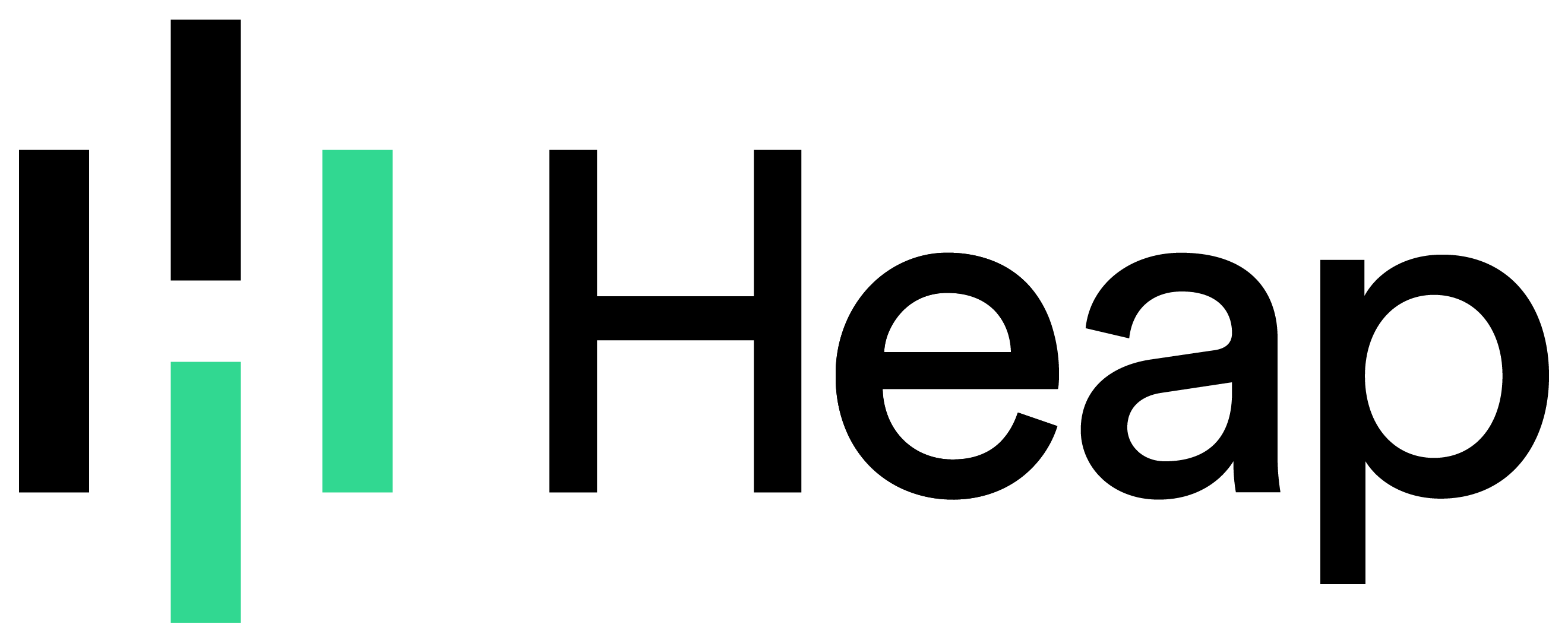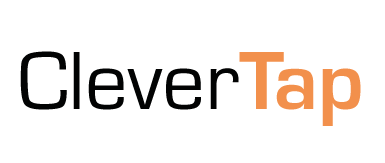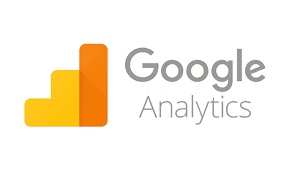Finding the Right Alternative to Amplitude
Why Product Teams Seek Out Amplitude Alternatives
Amplitude is a behavioral analytics platform that’s become popular among product teams looking for 360° views of their customer journeys. If you’re already using it, you know that Amplitude is largely focused on user behavior across websites and apps, which makes it a better choice for product managers and business users who care about more than just general website metrics. Amplitude customers often use the tool to guide product strategy, improve engagement and conversion rates, and increase user retention.
While the platform offers powerful analysis tools and a good deal of customization, it also leaves users with several frustrations that may cause them to look for an alternative. Whether you’re weighing your options or are already a paying customer, there are a few things to consider.
Limitations of Amplitude
Where Amplitude falls short:
Requires extensive engineering resources to get value
Requires manual event tagging, which canleave major holes in your data
Need to update tagging with every new release or update on your site
Lacks a good selection of third-party integrations
Can be overwhelming for the non-analyst
Implementing Amplitude is tedious
The first limitation is its implementation—while Amplitude can be a powerful tool, setting it up requires substantial engineering resources. You’ll have to decide in advance which events to track and have engineering put them in place using custom tracking code. If you choose the wrong events or want to add more later, you’ll have to go back, grab more engineers, and have them add more tags.
There’s no flexibility in adding new events
Another issue with manual event setup is the lack of flexibility. If your site changes, or you decide to track additional events, it takes significant work to get Amplitude to associate your new events (a new “Buy” button, for example) with your old ones (your old “Buy” button). This makes it difficult to keep events and analyses consistent as your site evolves, making Amplitude particularly difficult for companies whose customers make recurring purchases or subscribe to a service over long time periods.
While Amplitude does offer a free version, the jump to the next pricing level is significant. If you have the budget, however, the first paid tier of Amplitude has a strong set of behavioral and predictive reports to help cut through the noise.
Managing Amplitude takes significant resources
No matter what tier you choose, non-analysts may find Amplitude overwhelming even after it’s set up. In addition, enterprise and other larger companies who want to move their behavioral data into a data warehouse, or to blend it with other data in a BI tool, may encounter difficulties. There are plenty of options for slicing and dicing data in the Amplitude UI, but the tool offers limited connectivity with common warehouses. For this reason, companies with fewer technical stakeholders may be looking to switch.
To help you avoid these issues, we’ve analyzed ten alternatives to Amplitude.
#1 Heap

Heap is a product analytics platform that helps you understand how and why customers engage with your product and website. Heap solves a major shortcoming of Amplitude and many of its alternatives have—manual tracking. Instead of requiring engineers to set up detailed custom event tracking, Heap autocaptures all data on user activity from the start. This quality alone makes it a great option for users who want the breadth of Amplitude’s features without the complicated implementation and maintenance that come with it.
Top features:
Powerful product analytics
Autocapture for all event data
Heap Connect to automatically bring data into your data warehouse
Use cases:
Optimize conversions across channels and platforms
Drive engagement in your product and website
Better tailor the in-app experience
Improve retention at all stages
Like Amplitude, Heap makes it possible to track user behavior throughout the customer journey. The big difference is that to do this Heap requires only a single javascript snippet. The platform automatically collects data on everything users do, including which channels drive them to your site, which behaviors lead to conversion, and how different users and groups of users engage with your product.
When using the autocapture feature in Heap, there’s no need to organize tags or ask engineering to add new ones. Heap can pull in data from over 20 third-party integrations, including Shopify, Salesforce, and more, which adds to the breadth of information available to you. Heap’s new Data Engine is also hugely beneficial for companies planning for the future. By providing consistency and governance for their dataset, Heap helps teams avoid falling into silos, which tends to happen when using tools that require manual tracking, like Amplitude.
Heap’s simple setup and ability to scale makes it the best Amplitude alternative for companies that need enterprise-grade analytics without the tedious process of creating custom events.
Final word: Heap’s flexibility in tracking the entire user journey, its ease of use, and its ability to autocapture all user data creates the perfect option for companies looking to understand their users without getting bogged down by manual setup and maintenance.
#2 FullStory

FullStory focuses on improving revenue and retention across all of your digital channels. The platform is heavily geared toward consumer apps, making it a good option for companies where the majority of customer activity takes place on mobile apps or in online stores.
Top features:
Analyzes conversion funnels
Detects signals of friction in your UI
Visualizes aggregate user trends over time
Heatmaps
Use cases:
Pinpoint where sales are made or lost
Earn customer loyalty
Deliver trusted services
FullStory stands out in its ability to use machine learning to suggest changes you might make to the user experience. It does a good job of noticing and tracking changes to your app, and seems tailored to the non-technical user. However, its most obvious limitation lies in custom event tracking. Although FullStory brands itself as “tag-free,” users can’t track every event they might want to, since the app only integrates with Segment and Tealium events. Because of this users often end up sticking to the built-in features. Similar roadblocks occur with identity tracking—while it’s possible to track unique user IDs in FullStory, the process is tedious and easy to make mistakes in.
Final word: A good choice for consumer brands who don’t have the need for much customization and want to leverage predictive insights, but doesn’t compare to Amplitude’s event tracking options.
Interested in alternatives to Fullstory? Check out our complete guide.
#3 Chartbeat

Chartbeat
Chartbeat is an Amplitude alternative that’s best tailored to media companies. If your product is mostly built around content, you can learn a great deal about user behavior from Chartbeat. The platform takes a mobile-first approach and has strong features around reporting and optimization.
Top features:
Real-time dashboards across apps and websites
Advanced queries and reporting
Headline testing and content optimization
Use cases:
Understand how your audience connects with your content
Optimize placement of page elements and headlines
Help understand the path to paying subscribers
Built detailed custom reports
Chartbeat is intended for large and mid-sized companies with over 5 million monthly pageviews, so it’s not for everyone. Pricing is hard to find on their site, but other sources estimate the cost starts at $7,000 per year.
Final word: For media companies or those structured similarly, Chartbeat can help optimize content and the user experience. For more complex products, it’s not your best bet.
#4 Adobe Analytics

Adobe Analytics is a feature-heavy but expensive solution for product analytics. Unlike Amplitude, it has no free version—its complex pricing matrix includes features like website analytics, marketing analytics, attribution, and predictive analytics. It has plenty of customization options that may appeal to large organizations, but leaner companies will likely be overwhelmed with implementation.
Top features:
Web analytics
Multi-channel data collection
Segmentation and customer journey analytics
Predictive analysis
Use cases:
Get 360 customer views
Understand attribution for new customers
Predict your most valuable users
Setting up custom events in Adobe requires many steps, and requires you to create a detailed event tracking plan to make sure you’re gathering the data you need. Adobe allows you to track the entire funnel across channels if you’re up for the manual setup, but works best in conjunction with other Adobe products.
Final word: Adobe is a commitment. It’s feature rich but requires substantial engineering resources to set up and works best for large enterprises with the budget to support it.
Want to go deeper? Read our complete guide to Adobe Analytics alternatives.
#5 Clevertap

Clevertap is a tool that focuses on increasing user retention and customer loyalty on mobile apps. It’s best for companies in the consumer sector and relies heavily on AI to suggest the best paths to improve conversions and revenue.
Top features:
ML-driven audience analytics
Automated segmentation
Campaign optimization
Use cases:
Understand omnichannel user engagement
Improve retention rates
Personalization at scale
All Clevertap pricing plans require you to contact sales, and according to Capterra plans start at about $1,000 per month. Companies looking to blend web analytics with app data will likely find it too mobile-focused.
Final word: Clevertap might work well for consumer brands looking for paid Amplitude alternatives. However, its mobile focus and reliance on AI make it a poor choice for companies looking for more flexibility and customization.
#6 Pendo

Like Amplitude, Pendo is built primarily for product teams and offers insights about the product journey. The platform offers several features outside the scope of Amplitude, like employee and user onboarding, but competes fairly well on the analytics feature set.
Top features:
Sentiment tracking
In-app guidance
Product insights and feedback
Product roadmap guidance
Use cases:
Onboard new users
Retain more customers
Increase growth and adoption
If you’re looking for the ability to really dig into customer data and compare different groups of users, Pendo falls short. For example, while you can view retention graphs and conversion funnels, you can’t segment those graphs by individual behaviors, which makes it difficult to see if drop-off at a certain point in the funnel correlates with other behavior, or to compare user groups and see which is more likely to stick around or drop off.
Pendo can autocapture some event data, giving it an advantage over Amplitude. However, you’ll still have to rely on manual tagging to capture many important interactions.
Final word: Although Pendo has a broad feature set and the ability to be customized, it still requires tedious, manual event tracking. More of an equal trade than an upgrade from Amplitude.
Trying to narrow down your options? See how Heap and Pendo stack up against each other.
#7 Google Analytics

Google Analytics is part of most companies’ stacks, but focuses mostly on tracking activities related to acquisition. It offers granular data on the way visitors find your website and where they come from, but can’t provide a comprehensive view of user behavior after that.
Top features:
Detailed web acquisition metrics
Aggregate segmented user data
Customizable conversion goals
Use cases:
Understand how users are finding you
Drill down into specific traffic sources
See real-time user data
Google Analytics falls short when it comes to reconciling user identity, as it’s hard in GA to link visits from different devices and sessions to a single person. It also requires tedious manual setup for custom events—you’ll have to use Google Tag Manager to track user behaviors like clicks, form submissions, or video plays.
For companies that want more enterprise-appropriate features like an SLA, fewer data limitations, and improved reporting and customization, there’s an option to upgrade to Google Analytics 360. At that price, however, there are far better product analytics options on the market.
Final word: Google Analytics’ lack of user identity data makes it a hard sell as an Amplitude alternative. It may be best as an additional tool rather than a replacement.
Want to compare some of the top alternatives to Google Analytics? Read more here.
#8 Countly

Countly is a privacy-focused option for product teams looking for in-depth user analytics. Like Amplitude, it allows you to maintain detailed profiles about users and their behavior.
Top features:
Secure, private user analytics
360° view of customer journeys
Countly and user generated plugins
Analytics consultancy
Use cases:
Host your analytics solution on-prem
Extend the product with custom plugins and SDKs
Have complete ownership of your analytics
While Countly is a great option for security-conscious product teams, it still requires manual event setup. Pricing starts with an open source, free-forever plan that’s extensible with the right engineering resources. However, Countly doesn’t have a way for less technical users to easily get started.
Final word: Good for technical teams that want full control, but lacking the flexibility and seamless experience that other Amplitude alternatives provide.
#9 Mixpanel

Mixpanel is a product analytics platform that lets you analyze web, mobile, and smart devices to see how and why users engage, convert, and return to your site. Like Amplitude, Mixpanel requires engineering resources to set up manual event tracking.
Top features:
Behavioral analytics
Data science
Infrastructure
Messaging and testing
Data governance
Use cases:
Get insights into how people interact with your products
Drive marketing engagement and conversions
Get high quality data and custom analysis
One of Mixpanel’s strengths lies in measuring the success of launches and campaigns. If you have a large user base and need to track many small events (like microtransactions from in-app purchases), Mixpanel can be helpful.
Overall, Mixpanel has fewer options for visualization and customization than Amplitude. Pricing after the free plan starts at $89, then moves up to enterprise.
Final word: Mixpanel doesn’t solve the problem of painful event tracking, but it might be a good option if individual campaign metrics are at the top of your KPIs.
See how Mixpanel and Heap compare to help you make the final call. Or read more about top Mixpanel alternatives for Product and eComm.
#10 Kissmetrics

Kissmetrics is a tool for product and marketing teams that focuses on advanced web analytics. If your product is mostly web based, it does a decent job of tracking metrics about key user behavior like signups, trial starts, feature adoption, and churn. However, if your product is iOS or Android-based, Kissmetrics won’t live up to Amplitude.
Top features:
Dashboard with KPIs at a glance
Cohort reporting
Funnel reporting
A/B testing
Use cases:
Understand SaaS metrics
Optimize your ecommerce funnel
Kissmetrics isn’t for those looking for free Amplitude alternatives—its lowest plans start at $299 a month. As for implementation, Kissmetrics is similar to most website analytics products. You’ll need to install a tracking code and come up with a tracking plan to make sure you’re capturing the right metrics up front, and you’ll have to ask for engineering for help each time you want to update event tracking.
Final word: If you’re a SaaS or ecommerce company whose product is web-based Kissmetrics will give you granular user-based data for a reasonable price. For other apps or multiple platforms, it falls short.
Getting started is easy
Interested in a demo of Heap’s Product Analytics platform? We’d love to chat with you!
